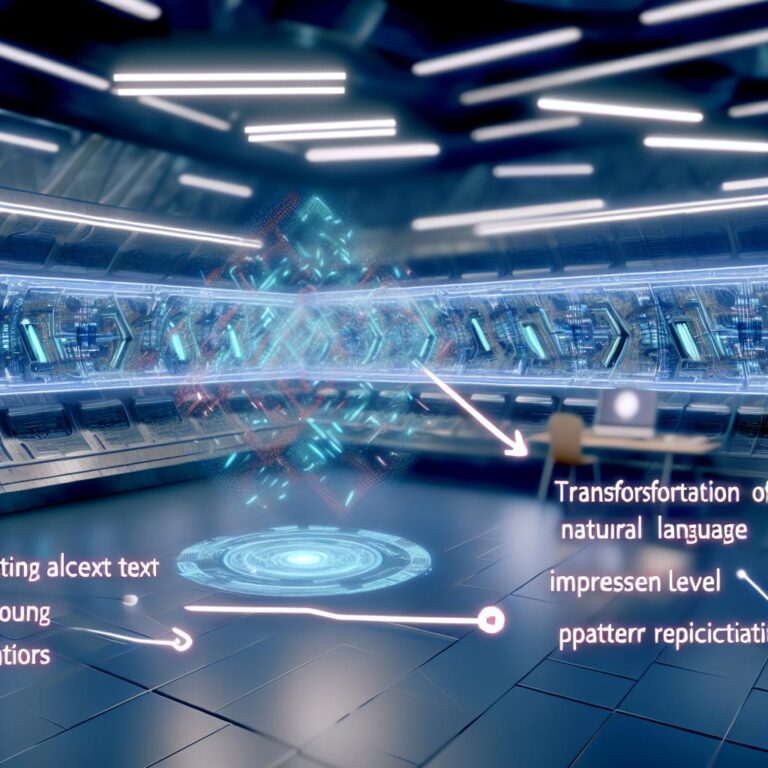AI prompt examples: Which ones inspire creativity most?
- Crafting precise AI prompts enhances effective AI interactions across various fields like art creation, content generation, and task management.
- Good prompts are clear and specific, reducing ambiguity and improving results by providing detailed instructions.
- Building effective prompts involves using context, simple language, and error-free sentences to ensure AI comprehension.
- Effective prompts spark creativity in writing and art, such as storytelling or generating surreal artwork.
- AI prompts apply to diverse fields, including education and marketing, enhancing engagement through creative tasks.
- Tools like Formidable Forms enable AI integration into websites, streamlining user interactions, and increasing engagement.
- Beginners should focus on clarity, specificity, and practice for writing successful AI prompts, utilizing resources for guidance and learning.
- Personalizing AI prompts in art requires clear, descriptive instructions and can result in creative and visually impactful outcomes.
AI prompts are more than just words; they inspire, guide, and create. Imagine a future where machines partner in creativity, pushing the boundaries of art and technology. This post dives into AI prompts that stir imagination the most. We'll explore what makes a prompt effective and how to craft them for astonishing results. Whether you're an AI rookie or a seasoned tech enthusiast, let's unlock how AI can transform your creative process and discovery.
Why is crafting AI prompts essential for success?

Crafting AI prompts is a skill that sets apart the successful AI interactions from the frustrating ones. It’s the foundation of effective AI usage in many fields. Whether you are generating art, creating content, or even managing tasks, the understanding of AI prompt mechanics is critical.
A good AI prompt is like a sharp tool. It's precise, targeted, and gets the job done efficiently. But what makes a good AI prompt stand out from a poor one? It starts with clarity and ends with specificity. Clear instructions help AI understand what you want. The words you choose can make a big difference in how well the AI performs.
Specificity in AI prompts is where the magic happens. When you give the AI detailed instructions, it knows exactly what to do. Good AI prompts avoid confusion by removing ambiguity. For example, instead of saying "Write a story," try "Write a short story about a wizard who travels through time." The added detail guides the AI to deliver more relevant outcomes. You want the AI to focus on the task at hand, not guess what you mean.
Let's explore why clarity in instructions matters so much. Clarity reduces errors and enhances the AI's ability to understand you. Think of it like giving simple directions to a friend. If you're clear, they'll likely arrive at the right place. The same goes for AI. Clear prompts mean fewer misunderstandings and better answers.
Building effective AI prompt strategies involves several components. It’s not just about the words. It's about providing context and using the right language. Context helps the AI by framing the task. Like using cues in a conversation, context tells AI what’s important. Using simple language also helps keep the AI on track. You want your instructions to be easy to follow, without complex or technical terms.
Moreover, prompts benefit from error-free sentences. AI systems perform better with well-structured input. Typos and grammatical errors can lead to incorrect or unexpected results. Just like a car running smoothly on a clean road, AI runs better on clean text.
So, how can you improve your AI prompt strategies? Begin with practice and refinement. Test different prompts and see what works best. Learn from each interaction. This trial and error approach will help you craft the most precise prompts over time.
If you're curious about the many ways AI prompts can be used, explore examples of AI-generated images, art, or even educational and marketing prompts. From designing logos to creating virtual quizzes, the possibilities are endless. Using tools like Formidable Forms can also help. These tools integrate AI features into websites smoothly, enhancing both functionality and user engagement.
By understanding AI prompt mechanics thoroughly, you maximize AI’s potential in your projects. Tailor your prompts for each task, and soon, crafting detailed instructions will become second nature. This nuanced understanding leads to greater success across different AI applications.
What are some great AI prompt examples across different sectors?

When venturing into the realm of AI, one questions the magic of creative prompts. Which ones not only serve the task but inspire creativity?
Compelling AI Writing Prompt Examples
In writing, I start with the power of storytelling. Consider this prompt: “Write a tale about a time traveler who learns a lesson in kindness.” This simple instruction sparks vivid imagery and narratives right away. For practical tasks, think about a prompt like: “Compose a persuasive letter for saving local forests.” Here, specificity in intention guides the AI to produce a well-structured argument. Remember, the best writing prompts spark not just coherent language but ideas that engage readers emotionally. Compelling prompts activate AI's potential to create relatable and inspiring content by providing a narrative framework and a clear purpose.
Utilizing AI for Artistic Purposes
Art finds a fresh canvas with AI, allowing creators to push the boundaries of imagination. Imagine instructing an AI: “Generate a surreal artwork featuring a futuristic cityscape.” This type of prompt unleashes the machine’s ability to blend creativity with design in unexpected ways. By guiding an AI to design with prompts like: “Create a mural theme based on environmental harmony,” artists can introduce new perspectives and possibilities, while ensuring that their core vision is reflected in the produced piece. Through intelligent prompt crafting, AI transcends traditional boundaries, offering innovative solutions in digital artistry.
For those interested in visual creation, exploring multimodal image understanding offers potential. By employing innovative prompts, AI can generate logos that resonate with brand identity. Take for example: “Design a logo that embodies growth and sustainability,” or “Craft a book cover for a mystery novel set in the Victorian era.” With clear and targeted guidelines, AI can fulfill an artist’s brief more effectively, producing imagery that is both original and compelling.
Innovative AI Prompt Examples for Diverse Applications
AI extends its innovations beyond writing and art. Think education: "Create an interactive quiz that teaches water conservation.” This prompt combines learning with engagement, crafting an educational tool that is both informative and interactive. AI also enhances marketing by generating specific prompts like: “Devise a social media campaign to highlight the benefits of solar energy.” Here, AI draws on data insights to craft messages that resonate with intended audiences.
AI prompts thrive in complex environments by transforming detailed instructions into achievable actions. To illustrate, consider a gaming industry prompt: “Develop a race game level set in a post-apocalyptic world.” The AI uses such commands to engineer experiences that captivate and immerse audiences. By challenging AI with diverse and targeted prompts, there is a cascading effect of creating and refining ideas across various fields.
In conclusion, the power of AI is unlocked through imaginative and precise prompts. This multimodal approach extends AI's functionalities beyond task completion, yielding intelligent solutions that inspire creativity in multiple sectors. As we provide AI with structured tasks, creativity not only emerges but thrives, ensuring fruitful outcomes in writing, art, marketing, and beyond. Effective creative AI prompts integrate pragmatic detail with inventive potential, enhancing AI's value across varied applications.
How can you integrate AI into your website effectively?

Integrating AI into a website requires smart planning and choosing the right tools. One effective option is Formidable Forms. This tool lets you add powerful AI features to your site without a fuss. With this, even beginners can create smart forms, personalize the user experience, and increase engagement easily.
Formidable Forms offers many benefits for AI integration. Its compatibility with WordPress ensures smooth performance since WordPress powers about 40% of websites. This means Formidable Forms is built for success on many different types of websites. Its drag-and-drop form builder is easy to use. You get full control over what your AI-enhanced forms can do.
Adding AI to your website enriches many functions. Imagine having a smart sales assistant right there on your site. AI prompts can help with this by engaging users and answering their questions 24/7. This makes the user experience better and can lead to more sales. AI chatbots, powered by tools like ChatGPT, can understand and help users quickly. They use data to respond to specific questions, making them valuable to businesses.
AI prompts can improve your website’s functionality in several ways. For example, they can be tailored to offer product suggestions. A well-known example is Netflix, which suggests movies or shows based on viewing history. On a website, AI can prompt visitors with product recommendations similar to what they have viewed before, improving the chance of a purchase.
Using ChatGPT with Formidable Forms, a site can have real-time chat support. This makes a big difference in how users find help. Therefore, businesses that need to respond to frequent customer questions benefit greatly from AI-powered prompt tools.
For those looking for creative examples of AI integration, consider sites that host interactive content. Some websites use AI to create quizzes and games that are personalized to each user. AI can tailor questions based on user responses, keeping the user engaged. The more personalized the experience, the more likely users will stay on the page.
Integrating AI effectively into your website is an evolving process. Start by choosing tools like Formidable Forms, which offer reliability and ease of use. From there, explore different AI features like chat support, product suggestions, and smart forms. With the right approach, your site will become more interactive and user-friendly.
These examples illustrate that AI's potential on websites is vast. The key is to start with small steps, then expand as you become comfortable with the technology. Continual experimentation and use of AI prompt tools make your website more engaging, creative, and successful.
By leveraging the features of Formidable Forms, you refine how users interact with your site. You can boost sales, improve support, and personalize content. This ultimately achieves better engagement and satisfaction levels for your audience.
As you explore these AI possibilities, remember efficiency is crucial. Keep your prompts clear and focused. A well-designed prompt speaks directly to users' needs, leading to the best possible outcomes.
How can beginners start writing effective AI prompts?

When starting with AI prompts, you might wonder what makes them work. The magic lies in their precision. A good AI prompt is like a clear map. It shows the way without any guesswork. Let me share the basics of crafting successful AI prompts.
What are the basics of crafting successful AI prompts?
To create effective AI prompts, focus on clarity and specifics. You need to tell the AI exactly what to do. Think of it as giving directions to a friend. If you say, "Draw a tree," the result might be unclear. But saying, "Draw a tall oak tree with green leaves," gives you a vivid picture. The first command is vague, while the second is specific. This specificity is vital in crafting AI prompts like these video prompts.
How does one start structuring AI prompts for maximum efficiency?
Begin with a simple but complete idea. Follow its flow as you form the prompt. Keep your sentence structure easy to read. Using simple sentences helps the AI follow your intent. For example, use two sentences to break a longer thought: "Create a logo. It should be blue with white text." Each piece of your prompt acts as a step in a recipe. This step-by-step structure aids AI in understanding your needs better.
Explore what the AI can and cannot do. Try different tasks: like asking it to create images, write stories, or suggest ideas. Understanding these might seem hard at first. But playing with them helps you learn what works. Don't forget, too many details can confuse AI. You need enough info to guide, but not too much to clutter. Test different ways until you find a balance. This skill grows with practice.
What comprehensive resources are available for new AI prompt writers?
New writers often seek a guide. Plenty of resources can help. Some offer a complete guide on writing AI prompts. Online platforms like tutorials and forums can prove useful. They contain examples that inspire and teach. Books on AI and prompt writing might have deep insights. Courses are also available for those who want a hands-on approach. These usually offer real scenarios and feedback on efforts.
Websites with forums might have active communities. In these, prompt writers share tips, tricks, and ideas. Peers can be valuable teachers. They might have faced similar challenges in crafting prompts. Learning from others' mistakes is smart. It saves time and hones your skills more rapidly.
Tools like Google’s Vertex AI enhance your learning. They offer step-by-step guides and examples of well-written prompts. For visual learners, video tutorials explain with a hands-on style. YouTube is filled with creators showing how to write and test prompts.
The journey in AI prompt writing is both exciting and full of learning. The better you get at crafting prompts, the more exciting your projects can become. Dive into the resources out there and see your prompts evolve over time.
Are there AI prompt personalization strategies for creative applications?

AI prompts can unleash creativity in amazing ways. I enjoy exploring the magic art of tailoring AI prompts for special artistic styles. Start by knowing the style you want. Is it abstract, classical, or surreal? Next, describe the scene. Use vivid words and clear language to guide the AI. If you want to create something abstract, think about emotions or ideas the piece should express. A prompt like "Create an abstract piece that shows joy and movement" can guide AI engines to craft images that capture the essence of joy.
When crafting prompts for successful AI art, focus on four key areas. First, clarity in instruction is paramount. Simple words and short sentences help. Second, include context relevant to the art style you want. If your goal is a Renaissance-style portrait, mention this style. Describe features like lighting, color tones, and mood. For a pop art image, focus more on vibrant colors and bold outlines. Third, choose proper words—these shape the AI's understanding. Fourth, encourage the AI to explore different possibilities, especially within your theme.
There are effective strategies to personalize AI art prompts. Begin with narrowing down the theme or subject. Ask yourself what you wish to see. Is it a landscape, portrait, or abstract piece? Then, refine this with detailed descriptors or emotions. For example, if creating a landscape, decisions about mountains or oceans, daylight or dusk, need to be made. You can further personalize by experimenting with unusual combinations of themes or styles, like blending surrealism with cubism. Remember to play with verbs that suggest movement or life, like "flowing," "glowing," or "whispering," which bring art to life.
Examples of effective AI prompt customization can be profound and visually exciting. One example might prompt an AI to replicate the warm texture of Vincent van Gogh’s “Starry Night" but with a twist. By asking an AI to add a modern cityscape or sky scrapers with shifting skies, you can merge old and new art ideas into one canvas. Another successful prompt might request an AI to reimagine a classic movie scene, but in the style of comic book art. The colors become bolder and shadows sharper, introducing a fresh perspective on familiar imagery.
The brilliance of AI in art generation lies in these versatile prompts. You craft the rules and guide the creative process. Yet each prompt contains limitless potential. The art isn't just in the final piece but in the process of sculpting the prompt itself. The satisfaction of seeing a vision take form through AI is incredible. As you discover more about AI's capabilities, so, too, will your ability to guide its creative journey. Let your imagination run wild and embrace the creative collaboration between human thought and machine possibility. This combination can unlock wondrous artistic worlds.
Conclusion
Crafting great AI prompts can boost how effective AI tools are. Clear instructions and specific details are key. We looked at examples from different sectors, showing how AI boosts creativity and business. Integrating AI into websites can increase user engagement and functionality. Beginners can easily start using guides and resources. Tailoring prompts for the arts adds a unique touch. Use these insights to harness the power of AI prompts for your ventures.







